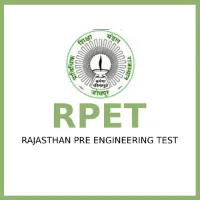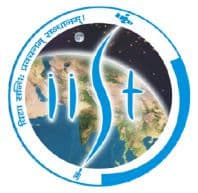Latest Applications Open 2024:
Rajasthan Pre Engineering Test is shortened as RPET 2024 and is a UG Entrance Exam which is held by the Board of Technical Education, Rajasthan.
Those who are willing to get their graduation degree in B.Tech or B.Ed. Courses are supposed to give Rajasthan Pre Engineering Test entrance exam. Applicants need to fill the application form and can apply for the entrance exam.
This is university entrance exam where anyone can apply for the entrance exam and can get admission in B.Tech or B.Ed. Courses.
RPET 2024 Exam Pattern
The RPET 2024 examination pattern will provide you the idea about ‘How to Prepare the Examination’ and ‘What are the Subjects included in the examination’. RPET examination pattern is given below:
The questions will be asked from the subjects (Physics, Chemistry, Maths) of class 11th and 12th Refer your textbooks of 11th class and intermediate for the preparations of RPET 2024.
There will be a total of 120 objective type questions, 40-40 questions from the individual subjects. The examination duration will be 3 hours. The language of the question paper will be English and Hindi. 1 mark will be awarded for every right response.
Syllabus
Measurement and Units: Dimensions of a physical quantity, uses of dimensional analysis, Errors in measurement.
Dynamics of a Particle: Newton’s laws, motion in one, two and three dimensions, relative motion, inertial frames, circular motion, spring force, gravitational force, law of gravitation, variation of gravity with altitude, escape velocity, satellite motion, work, kinetic and potential energies, conservation of energy, momentum, and angular momentum, elastic collisions in one and two dimensions.
Dynamics of a System of Particles: Centre of mass, motion under external forces, rigid bodies, rotation of a rigid body about a fixed axis, torque, angular acceleration, angular momentum, moment of inertia, radius of gyration, kinetic energy of rotation, combined translational and rotational motions, parallel and perpendicular axes theorems, moment of inertia of a ring, disc, cylinder, and sphere.
Simple Harmonic Motion: Basic equation, displacement, velocity and acceleration, graphical and mathematical representation, kinetic and potential energies, Lissajous figures, simple pendulum, compound pendulum as a rigid oscillating body. Mass-spring system damped harmonic oscillations, forced oscillations and resonance.
Intermolecular Forces: Attractive and repulsive forces, three states of matter, ionic, covalent, Van der Waals and metallic bondings, surface tension, angle of contact, capillarity, pressure difference across a spherical film, determination of surface tension by capillary rise and Jaeger’s methods, elasticity, Hooke’s law, Young’s modulus, shear and bulk moduli.
Kinetic Theory of Gases: Basic postulates, derivation of an expression for pressure exerted by an ideal gas, interpretation of temperature, equipartition of energy, specific heats of monoatomic and diatomic gases.
First Law of Thermodynamics: Dependence of work and heat on the path, internal energy, isothermal, isobaric, isochoric and adiabatic processes, specific heats of an ideal gas, Mayer’s relation. Radiation: Black-body, Kirchhoff’s law, Stefan’s law, Newton’s law of cooling, blackbody spectrum, Wien’s law.
Wave Motion: Progressive waves, superposition principle, beats, stationary waves, the vibration of strings, air columns, resonance, Doppler’s principle, and its applications to sound and light waves.
Nature of Light: Light as wave motion, plane, and spherical waves, Huygen’s principle, reflection and refraction at a plane surface, electromagnetic nature of light waves, quantum nature of light, coherent sources; Fresnel’s biprism, measurement of wavelength, Fresnel’s half-period zones, rectilinear propagation of light, diffraction at a circular obstacle, aperture and a slit for plane waves.
Electrostatics: Conservation and quantization of charge, Coulomb’s law, electric field, superposition principle, electric flux, Gauss’s law and its applications in simple cases, electric potential and potential difference, electric field and potential due to a dipole, capacitance, capacitors in series and parallel,
Electrostatics: Conservation and quantization of charge, Coulomb’s law, electric field, superposition principle, electric flux, Gauss’s law and its applications in simple cases, electric potential and potential difference, electric field and potential due to a dipole, capacitance, capacitors in series and parallel, energy stored in a capacitor.
Electric Circuits: Kirchhoff’s laws, Wheat-stone bridge and its applications, potentiometer, and its applications.
Magnetic Field: Biot-Savart and Ampere’s laws, magnetic field along the axis of a current-carrying circular coil, inside a toroid, due to a straight wire, magnetic moment of a current loop, force on a moving charge and on a current-carrying wire in a magnetic field, moving coil galvanometer, voltmeter, ammeter, electromagnetic induction, Faraday’s and Lenz’s laws, self and mutual inductances, transformer, energy stored in an inductor.
Alternating Current Circuits: Rotating coil in a magnetic field, ac, rms and peak values, phase relations between voltage and current in a resistor, inductor, capacitor and their series combinations, impedance and reactance (definitions only), instantaneous and average power in ac circuits, power factor, wattless current and choke coil.
Modern Physics: Photons, photoelectric effect, Bohr’s theory of hydrogen-like atoms, X-rays production and properties, de Broglie hypothesis, Davisson and Germer experiment, Thomson’s experiment, explanation of Bohr’s orbits, uncertainty principle.
Radioactivity, nature of alpha, beta and gamma rays, laws of disintegration, half and mean lives, atomic nucleus, binding energy, nuclear energy by fission and fusion.
Electronics: Thermionic emission, work function, diode rectification, and triode amplification, bands in solids (descriptive ideas only), conductors, semiconductors and insulators, intrinsic and extrinsic semiconductors, pn junction and its rectification properties.
If you have any other questions about RPET Syllabus 2024, you can write your queries in the comments box below.
Hi Guys, I am Sandeep Co-founder of IASpaper and UPSCToday Staying in Mumbai (India) and pursuing graduation in Computer Science and Engineering from Mumbai University. I love helping Aspirants.
You may join me on Facebook


